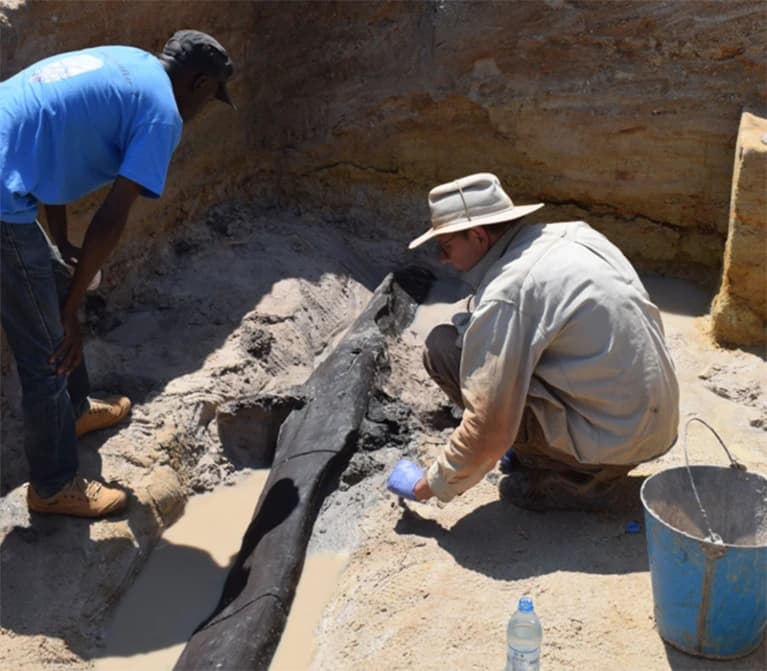In a paper published in Nature on 2023-09-20, “Evidence for the earliest structural use of wood at least 476,000 years ago” (full text [PDF] at link), researchers report discovery of two interlocking logs with a deliberately cut notch to join them, dated to at least 476,000 years before the present. Here is the abstract:
Wood artefacts rarely survive from the Early Stone Age since they require exceptional conditions for preservation; consequently, we have limited information about when and how hominins used this basic raw material1. We report here on the earliest evidence for structural use of wood in the archaeological record. Waterlogged deposits at the archaeological site of Kalambo Falls, Zambia, dated by luminescence to at least 476 ± 23 kyr ago (ka), preserved two interlocking logs joined transversely by an intentionally cut notch. This construction has no known parallels in the African or Eurasian Palaeolithic. The earliest known wood artefact is a fragment of polished plank from the Acheulean site of Gesher Benot Ya’aqov, Israel, more than 780 ka. Wooden tools for foraging and hunting appear 400 ka in Europe, China and possibly Africa. At Kalambo we also recovered four wood tools from 390 ka to 324 ka, including a wedge, digging stick, cut log and notched branch. The finds show an unexpected early diversity of forms and the capacity to shape tree trunks into large combined structures. These new data not only extend the age range of woodworking in Africa but expand our understanding of the technical cognition of early hominins, forcing re-examination of the use of trees in the history of technology.
A popular article in the same issue, “These ancient whittled logs could be the earliest known wooden structure”, notes:
Some 500,000 years ago in central Africa, ancient human relatives chopped down trees and transformed the wood into digging tools, wedges and what might just be the world’s earliest-known wooden structure.
Now, remnants of this ancient woodworking have been found at an archaeological site in Zambia called Kalambo Falls. Researchers can’t definitively identify the possible structure, which might have been a raised platform, a shelter or something else entirely. Whatever it was, it pre-dates the evolution of Homo sapiens by more than 100,000 years, hinting that hominins that lived long before our own species were already working wood.
⋮
A technique called luminescence dating suggests that the large wooden objects are at least 476,000 years old, and some of the smaller tools are slightly younger. No hominin remains have been found at Kalambo Falls, but a 300,000-year-old skull from another Zambian site has been identified as Homo heidelbergensis, a possible common ancestor of Homo sapiens and Neanderthals (Homo neanderthalensis).
Since wood is rarely preserved in sites these old, one wonders how many of worked artefacts found from the early Stone Age and attributed to other purposes might have been early carpentry tools.
